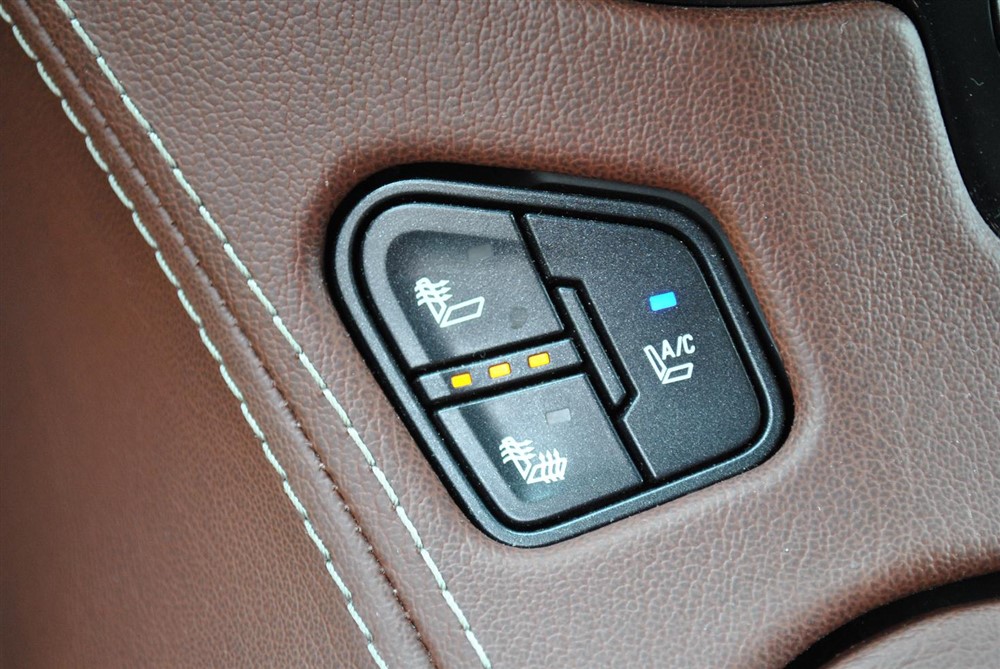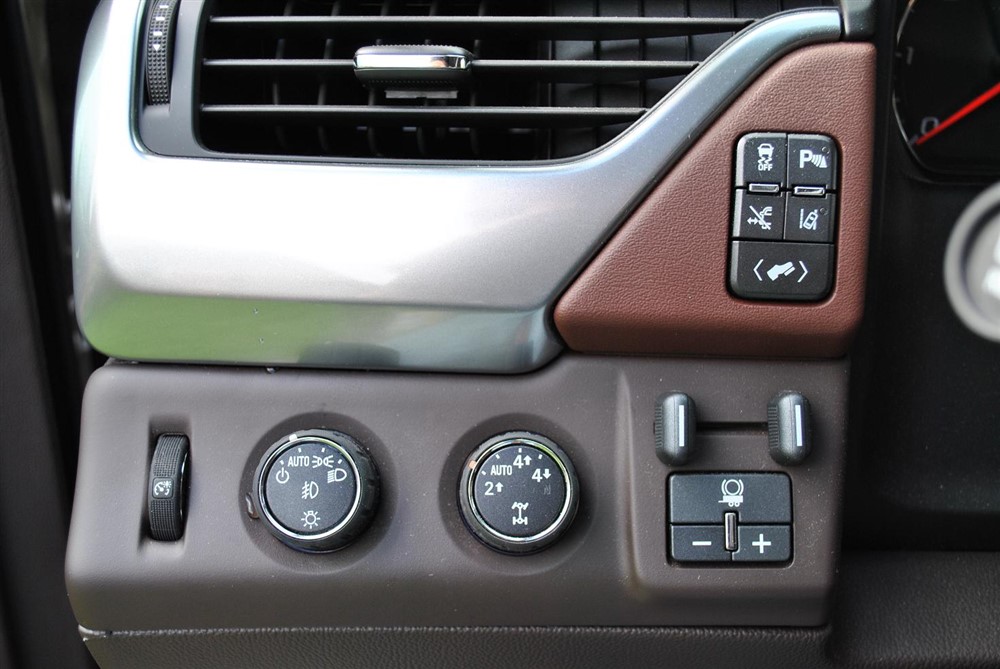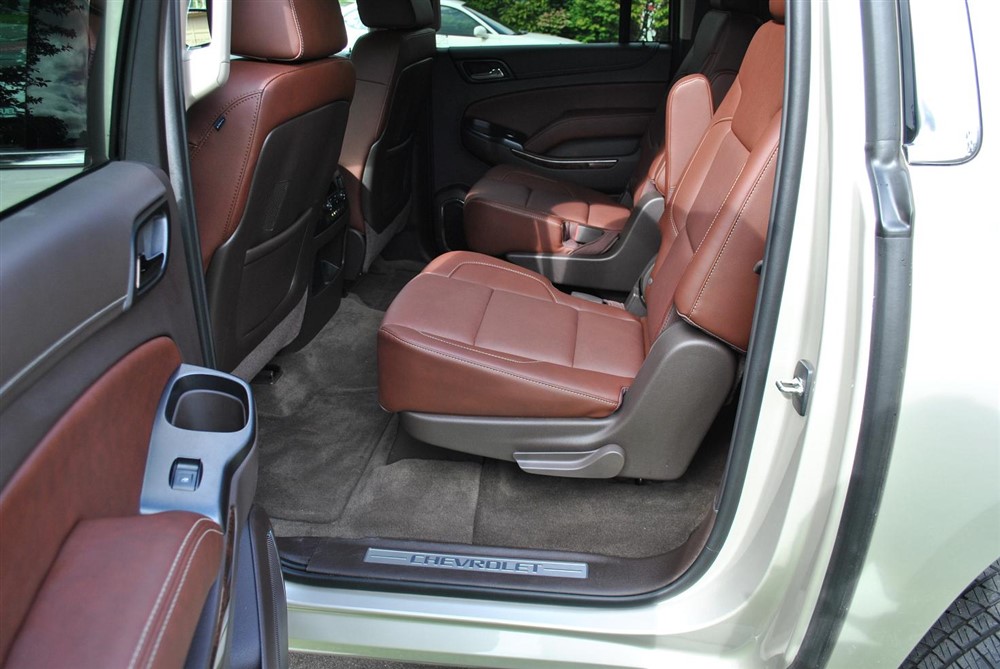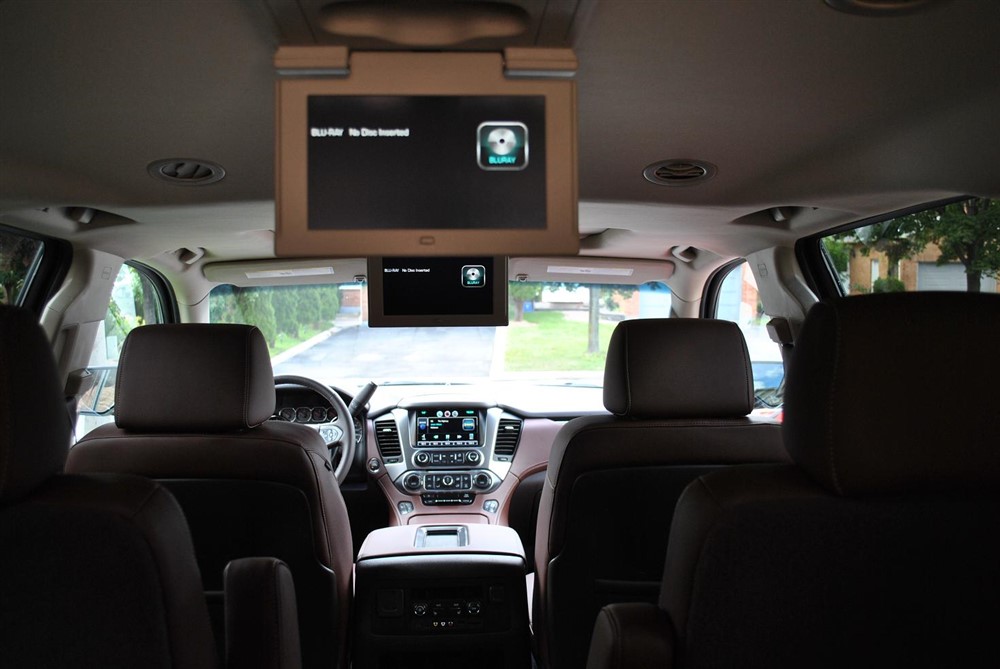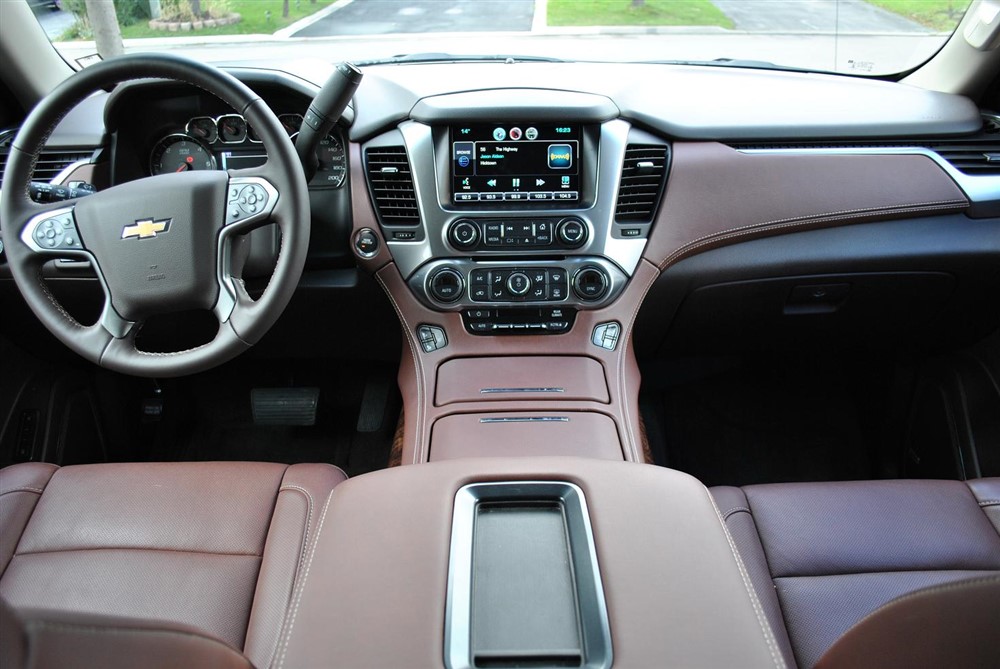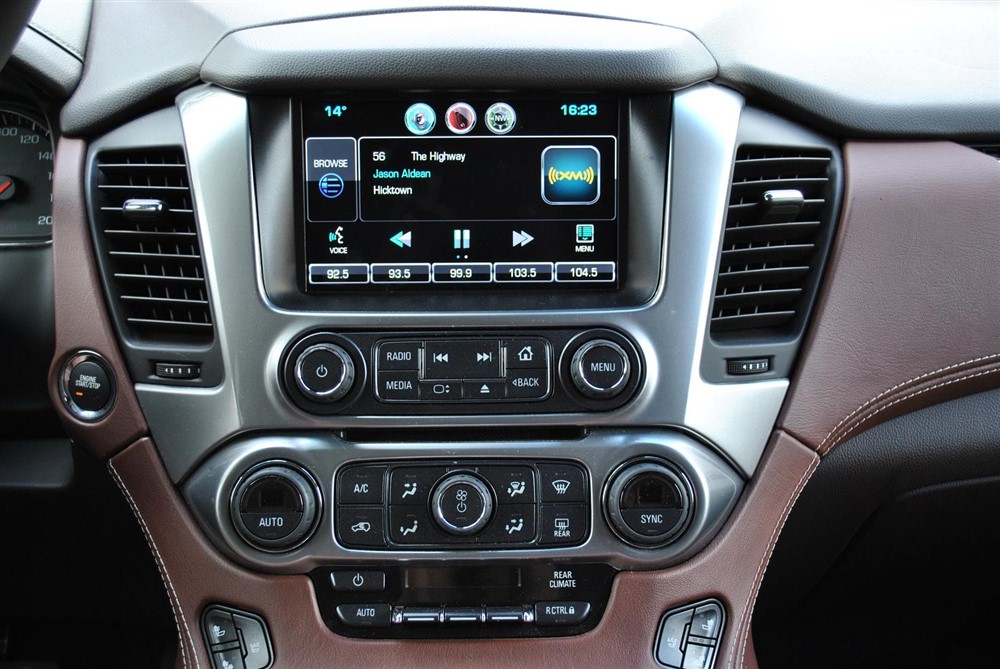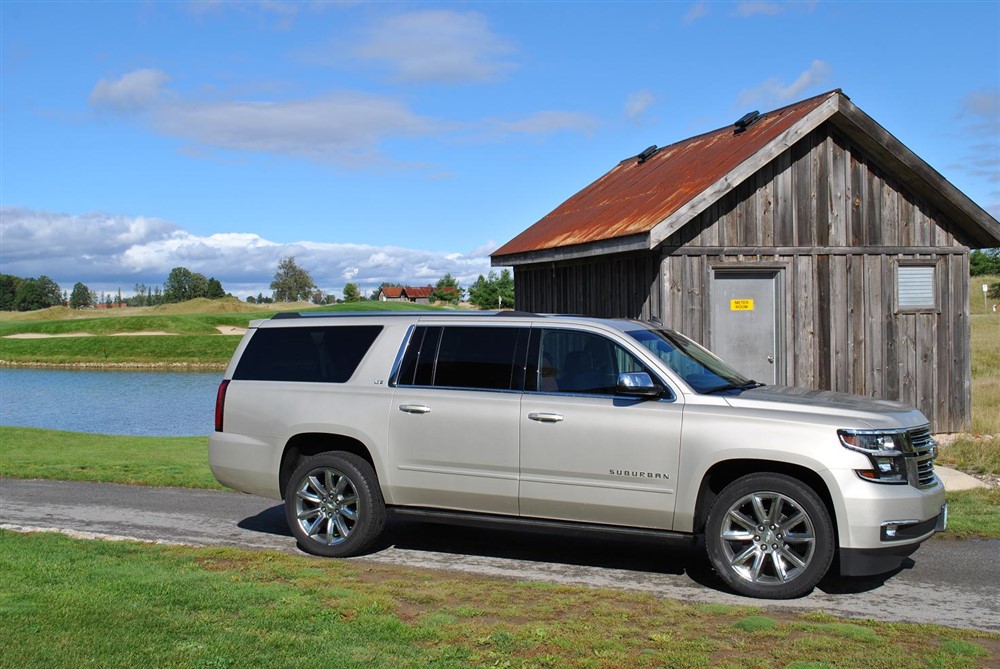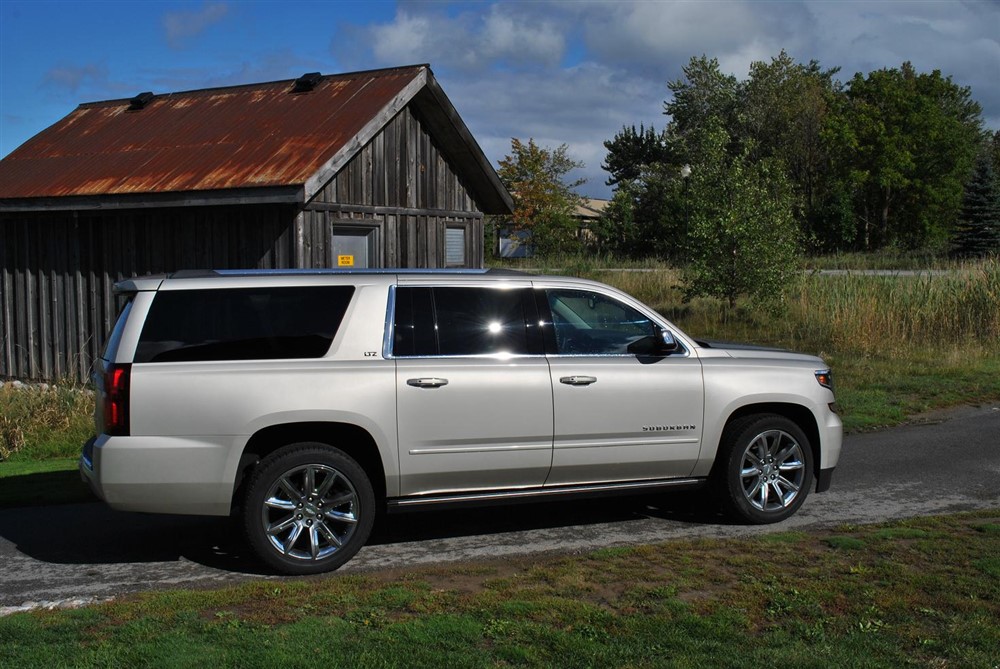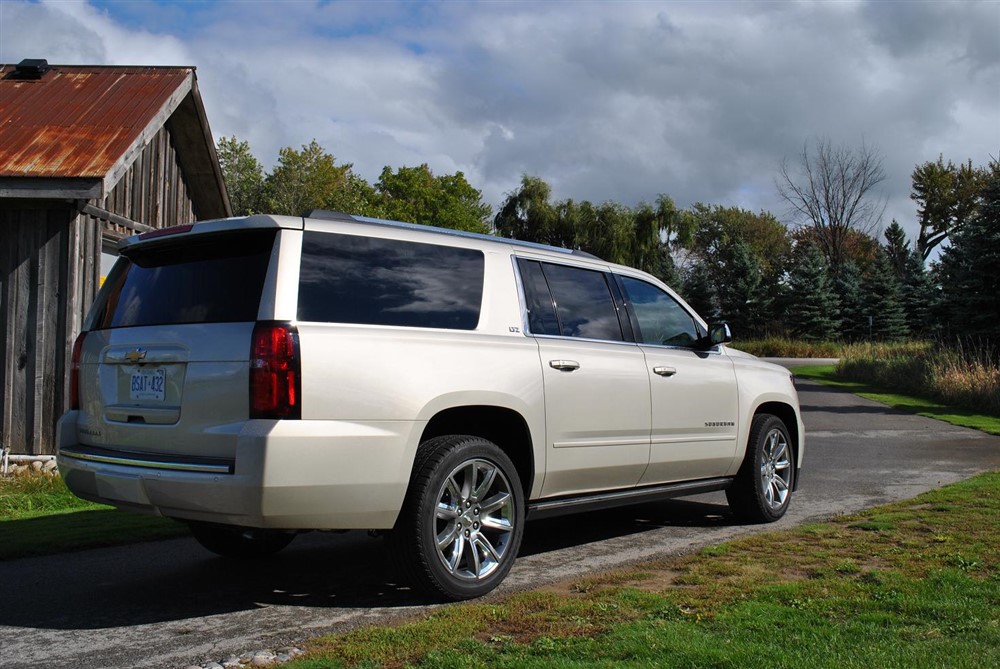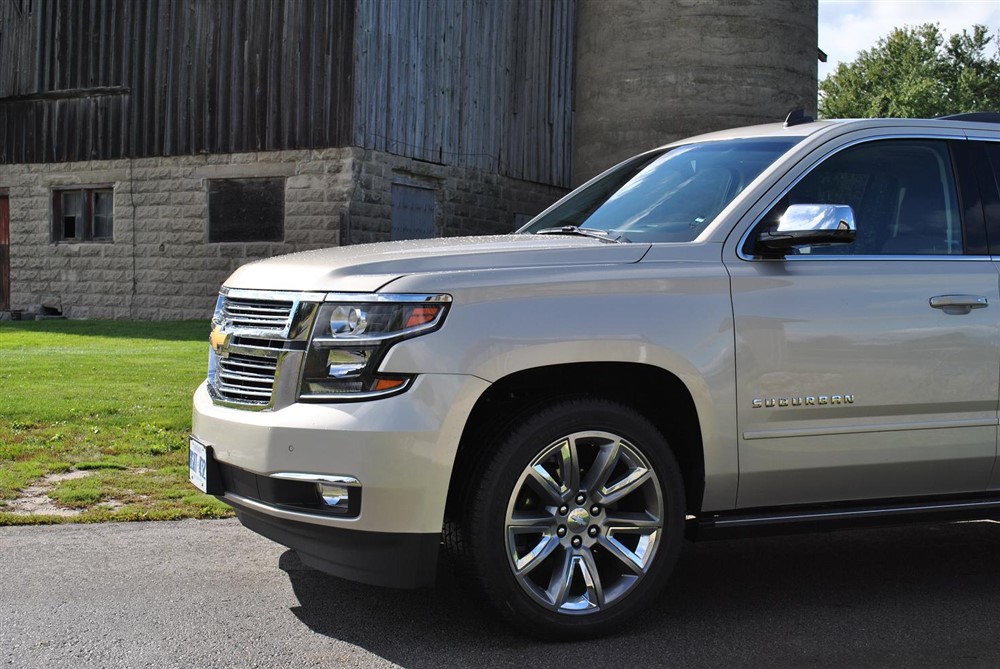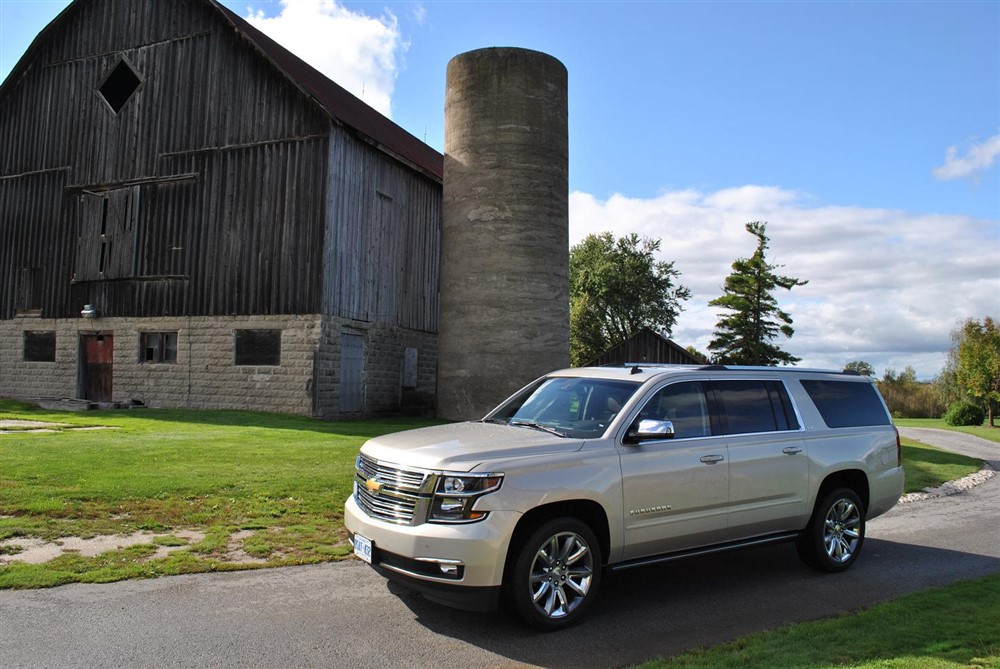When I buy a sports car I want it to be a true sports car. Similarly, when I buy an SUV, I want it to be a proper truck. These days that’s not exactly easy, as more and more SUV nameplates are dropping their full frame roots and migrating into the popular CUV segment consisting of more car-like lifted wagons. Yes, they are more efficient, sensible and better suited to the needs of most families – but where is the excitement? Fortunately, the massive GM SUV triplets; the Yukon, Escalade and Tahoe/Suburban have carved out a very successful niche for themselves as one of the most versatile, capable and luxurious full frame truck based SUVs. These things are big, expensive, in-your face and I’ve always loved them, right from their humble beginnings. Apparently I am not alone, as sales for the triplets have remained strong despite the rising costs of fuel. In fact, the all-new 2015 re-designs have exceeded their initial sales forecasts in North America, offering firm proof that there is still a strong market for these unapologetic machines.
These full-sized SUVS actually came from real truck roots. The first Suburban was released in 1933 and it was little more than an enclosed Chevy half-ton pickup. Early generations were used almost exclusively as work vehicles, even serving as military transport during the war. From that point, the Suburban (and its siblings) have slowly but surely moved up market, and by the 1990s were starting to come equipped with more and more luxury features. The trucks began to appeal to more upscale families. The option lists grew and these mammoth SUVs managed to earn their status as symbols of power and wealth, while still retaining the same utilitarian truck-based formula. A great success story and one that is embodied in my fully optioned out 2015 Suburban LTZ test truck.
Despite the fact that I have no “real” use for an SUV of this stature in my daily routine, I quickly fell for the new Suburban’s charm. Much like the full-sized GM pickups, the Suburban retains a traditional boxy look, which I absolutely adore. It gives the truck a certain persona and presence that curves and roundness simply cannot achieve on a truck. Finished in Champagne and sitting on gorgeous 22” rims, my tester remains subtle, yet the rims let onlookers know that this isn’t some government issued Suburban. It’s sort of like going out in sweats and sporting a Breitling – only those who bother to look twice are going to notice something special.
I did mention that the Suburban had moved upmarket, and with an as tested price of nearly $83,000, that is pretty far up. It’s no surprise that the interior of my tester is quite lavish. Dual rear Blu-ray screens, acres of luxurious saddle brown leather, a banging Bose 10-speaker sound system, air conditioned seats, and every other luxury in the book including power folding third and second row seats are enough to keep everyone from political leaders to screaming children in the utmost of comfort. The Chevy MyLink infotainment system found upfront is another one of my favorites for its clarity and ease of use; this system alone is a strong selling point for the Suburban over its Cadillac badged sibling running the CUE system.
Features aside though, the expansive interior of the Suburban is very well thought out to maximize utility; there’s more storage available inside the Suburban than in most city apartments. With the rear seats powered down, the Suburban’s cargo area can willingly receive just about anything that you could ask it too, assuming you don’t mind risking a little dirt on the plush carpets. Speaking of which, the overall fit and finish inside the Suburban is a significant improvement over the previous generation with a noteworthy reduction in the use of hard plastics.
Despite what its full frame platform might lead you to believe, the Suburban remains very serene inside while cruising along. GM has stepped up the use of sound dampening materials and technology to the point where I found myself sitting in the truck during a rainstorm and struggling to hear the drops of rain as they hit the roof. It’s definitely not the right vehicle for spirited driving though. While you can feel its weight around corners, the steering has a confident and connected feeling that I like. I was also impressed by a surprisingly tight turning radius, which really helps make the truck feel a lot smaller while moving around the city. The 5.3L V8 pushing out 355 horsepower does an adequate job moving the beast about, but it a bit less responsive than the 6.2L in the Escalade we tested a few weeks earlier. The Active Fuel Management system does do its job well, and with a gentle right foot it’s possible to keep the truck in 4 cylinder mode a lot of the time. Despite the heavy back to school traffic encountered, I managed a reasonable 13.6L/100km throughout my week of commuting into the city.
The Suburban has history, luxury and feels good behind the wheel. However, one thing a lot of buyers forget about the Suburban is that it is actually a very capable truck. This latest iteration can tow up to 8,300lbs, which very close to full-sized pickup truck territory. Plus I am sure the kids would be much happier watching Blu-rays in the back as you pull the family boat to the lake, instead of complaining from the back of a pickup with no rear climate control. Its pickup-based full frame platform also means it still has that determined ‘go anywhere, crash through anything’ macho feeling one gets behind the wheel of a big pickup.
The Suburban has earned success by staying true to its original work truck roots. Only now, its work isn’t carrying soldiers to battle or delivering packages. It’s about hauling families and all their toys to the cottage, getting A-list celebrities safely through mobs of paparazzi, keeping our political leaders out of harm’s way, and getting our children to school safely. Its purpose has evolved and the truck has evolved exceptionally to rise to the occasion, proving that even after 82 years some formulas just work.





